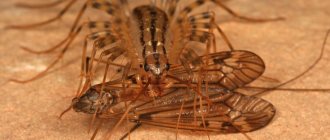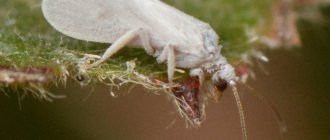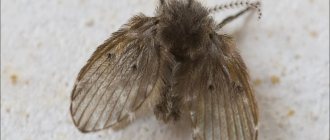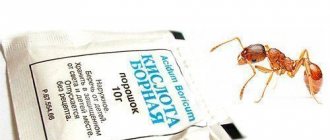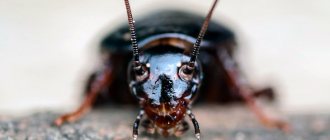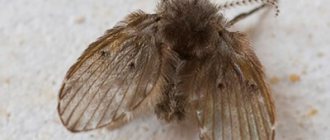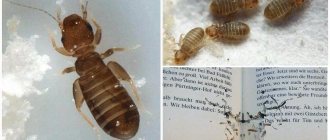Root or root-knot nematode is a round worm 1-2 mm long that infects plant roots. Plants develop “galls” on the affected roots.
This affects the normal functioning of the root system. The thickenings are initially yellow and then gradually turn brown.
Description
In nature, there are approximately thirty species of these worms. Some of them infect plants, others - animals, and still others - humans. Further we will talk only about root-knot nematodes that parasitize the roots of plants:
- Male nematodes are mobile, in contrast to the spindle-shaped, immobile females. Their body is worm-shaped, 0.5–2 mm long, narrowed at the front and rounded at the back. The larvae resemble the male form, but are smaller in size. The back of the body is more transparent and pointed. The eggs are microscopic and white in color. The female lays them in so-called egg sacs, consisting of a gelatinous film. One such bag contains a huge number of them.
At the end of the front part of root-knot nematodes (photo in the article) there is a mouth opening, inside of which there is a rigid needle called a stylet. Using this apparatus, they pierce the root of the plant and suck out the juices. The worms have a small head, moving lips and tiny eyes. The outside of the body is covered with an impenetrable but flexible cuticle, very resistant to chemicals.
Biology of roundworms
They reproduce in two ways:
- The female is on the surface of the root and lays eggs in a sac, the larvae from which first fall into the soil, and then make their way into the root system of the host plant, after which it becomes infected. The female individual is completely in the tissues of the root and lays eggs inside it. The hatched larvae move through the root tissues and settle there for feeding and development. Biological methods of protection no longer work on them.
It should be noted that larvae from the roots, under favorable conditions, are able to move throughout all organs of the plant.
Difficulties in exterminating the pest
The extermination of pests is made difficult by their localization in the soil. Moreover, the peak of nematode activity occurs during the growing season, when it is impossible to treat the soil under plants with chemicals, and replanting is undesirable.
The main fight against them takes place in autumn and spring; removing a colony can take several years.
In the case of the most vulnerable crops, success is considered to be containing the population size, which does not allow it to reach a level of high harmfulness.
Root nematode infection
The most suitable conditions for their reproduction are high soil moisture and air temperatures above 18 degrees. The period of formation of a root-knot nematode is approximately a month. It can reproduce up to six generations per year. Plants affected by pests have the following symptoms:
depressed look; leaf curling; cessation of growth; formation of yellow galls; the growth of many thread-like roots (root beard).
It is very important to distinguish the galls of a diseased plant from natural white thickenings that retain moisture.
Where does the root-knot nematode come from?
Nematode infection occurs through soil and planting material. But it is quite possible to introduce tiny parasites through the use of contaminated equipment, pots, and even drops of water flowing from a damaged plant during watering.
Nematodes can be found not only in the soil of a garden plot, but also in forest soil, composts and humus. And even purchased soil using untreated greenhouse soil can contain them.
Fighting methods
The pest is difficult to control: durable body coverings protect the worms from an aggressive environment and exposure to chemicals. In addition, they reproduce quickly. But difficult does not mean impossible in principle. Those who know the secrets of pest control can remove uninvited guests from the garden or greenhouse. True, you will have to put in a lot of effort. The number of pest colonies can be reduced mechanically, thermally, chemically or biologically. You should be prepared for the fact that methods do not always help one hundred percent. Much depends on the number of parasites.
Parasites on cucumbers
Tiny worms are terribly gluttonous and fertile. They accumulate quickly and in large quantities in the soil, especially when the crop is planted in one place. Most of all root-knot nematodes are found on cucumbers and tomatoes. Parasites, creating small thickenings in the roots, lay eggs, from which larvae emerge, devouring everything around them. By eating the roots, the worms prevent the cucumber from developing, depriving it of the opportunity to eat normally. The roots of the plant affected by the nematode become watery, with thickenings of a brownish tint. The branches weaken, the leaves fall and the cucumbers die.
The difficulty lies in the fact that the pest, due to its small size, is very difficult to detect at an early stage of development. For prevention, we must not forget about crop rotation, changing the cultivation of crops on the site annually. Where these parasites appear, plant garlic or cabbage instead of cucumbers. Nematodes do not tolerate these plants.
Signs of plant damage
Root nematodes attack the underground part of the plant. To see the consequences of the “invaders”, you need to dig deeper in the literal sense: dig up the plant and examine the root. But an experienced gardener/gardener can guess that an attack of root-knot nematodes has occurred by the appearance of a flower or vegetable crop. What are the signs of pests?
- Aboveground part. The plant appears as if it is lacking nutrients or is regularly thirsty. The leaves are lifeless and limp even after watering. Flowers and vegetable crops stop growing and gradually dry out.
- Underground part. The roots branch too much, but the lateral roots do not develop, but fall off or rot. The root system is completely covered with galls - characteristic swellings and thickenings. The integrity of the root cover is lost: the seals are watery and easily burst. Microorganisms enter the “wounds,” and their “activity” triggers tissue necrosis.
Plantings favored by nematodes can rarely be saved. Young shoots die immediately. If pests find an already mature plant, then it can continue to develop, but will forever lose its healthy appearance. Vegetable crops affected by nematodes may bloom and produce a harvest, but there will be very few buds, and therefore fruits.
In addition to root nematodes, there are stem and leaf nematodes. The former live off shoots, as a result of which they thicken, twist and become spindle-like. Leaf nematodes prefer to damage leaves. Infection can be recognized by necrosis on the leaf blade, swelling and wateriness of the leaves.
Open ground nematodes
In the European part with a temperate climate, two types of root-knot nematodes are observed in open ground:
- Birch - settles only on the roots of birch and does not pose any particular danger. Northern - lives in legumes, umbellifers, nightshades, ranunculaceae and asteraceae. Although the pest affects a huge number of plants, it does not pose a great threat to annuals. This species has only one generation per year and does not have time to settle in the roots of the plant to greatly weaken it.
We should soon expect a new parasite on the territory of our country - the Colombian root-knot nematode. It has already been introduced to Europe, and it successfully damages carrots, potatoes, beets, peas and many other open and closed ground crops. As a result of damage, the specific gravity of the tubers decreases and the yield decreases. Losses reach up to 80%. It overwinters in the roots of cultivated plants and weeds, and in the egg stage is also found in the soil. This parasite reproduces sexually and asexually. The life cycle lasts up to four weeks.
Nematodes that are absent in Russia
There are four species of these pests that cause plant diseases, but are not yet present in Russia. These include: Columbian, root, false Columbia and false gall. Countries from which they can be brought are Ecuador, America, Mexico, Chile.
One of the most dangerous and polyphagous is the root one. The exact range of its host plants has not yet been fully identified, but it is noted that the pest affects economically important crops: beans, soybeans, eggplants, cucumbers, watermelons and tomatoes.
The false root-knot nematode is no less dangerous. Its main hosts are potatoes and sugar beets. Infection with this species is possible through planting material (rhizomes, tubers) and soil. Worms of this genus form galls. They are most noticeable on sugar beets, from the thickenings of which small, numerous roots emerge. Symptoms of the disease appear on the fifth day after infection.
Peonies
Root-knot nematodes are the most common pests of peonies, but are sometimes confused with Lemoine's disease, which causes similar symptoms in the crop.
Infected plants stop blooming, are stunted, shoots develop poorly, and leaves wither.
If there is a slight infestation, try treating the soil with chemicals, but most plants do not survive - peonies are very vulnerable to the parasite.
In this case, it is best to dig up diseased plants and burn them without putting the rest at risk.
Pour boiling water and a weak formaldehyde solution (6 ml per 10 liters of water) into the hole from under the bush. Cover the treated soil with plastic wrap for a week.
In the coming years, peonies and other vulnerable plants should not be planted at the site of the infection.
Decorative crops include delphinium, carnation, calendula, snapdragon, ageratum, and sweet pea.
How to fight?
To combat root-knot nematode, the following means are used:
- Chemical preparations are the most effective: “Rogor”, “Nemafos”, “Bi-58”, “Dimethoate”. According to the instructions, the substance is dissolved, and the resulting mixture is treated with the soil. This procedure is carried out several times a season, because poisons kill only adult individuals. Biological agents. Such substances consist of natural components and are therefore not harmful to plants and humans. Nematophagin is often used. Before use, you must read the instructions and strictly follow their instructions. Heat treatment. The plant is removed from the soil, and part of the heavily affected roots where galls have formed are cut off. The rhizome is immersed in water at a temperature of 50 degrees for five minutes. The soil is replaced with another one that has a loose composition, adding an anti-nematode drug to it.
In case of severe damage, the plant is simply burned so that the pests do not find another victim.
Heat treatment
The thermal method will only help if there are not too many “invaders” on the roots. This method does not save severely damaged plants. The thermal method is recommended for use by lovers of indoor flowers. This is an excellent prevention of the appearance of nematodes on the roots of potted plants. Heat treatment should be carried out when flowers enter the dormant phase or when transplanting. The algorithm of actions is as follows.
- Heat the water to 50°C.
- Remove pest-affected specimens from the ground.
- Immerse the plants with their roots in previously heated water.
- With minimal damage to the root system, 5 minutes are allotted for the “bath”. If significant defects in the rhizome are visible, the “bathing” time is increased to 15 minutes.
- Immerse the plants in a container of cool water. Allow the roots to cool.
- Planted in a new substrate.
Another option for heat treatment is pouring boiling water over the soil. This procedure allows you to reduce the number of worm-like pests in your garden or flower bed. It is necessary to water the day before planting seedlings. To get the effect, it is important to saturate the soil with boiling water for at least 20 cm.
A useful life hack: to ensure that the soil cools down slowly after a spill, you need to cover the treated area with polyethylene. This will help increase the effectiveness of the procedure.
Preventive actions
It is very difficult to detect and get rid of nematodes, so it is best to take preventive measures and prevent the appearance of these parasites. To do this you need:
carefully carry out autumn soil treatment; destroy weeds in a timely manner; do not bring plants with a closed root system into greenhouses from botanical gardens, greenhouses and stores; clean up fallen leaves; observe crop rotation; loosen the soil regularly; fertilize the soil with organic matter; periodically carry out abundant irrigation of the land followed by drying; try not to over-moisten the soil.
One of the modern ways to protect greenhouses from pests is the use of sulfur bombs.


